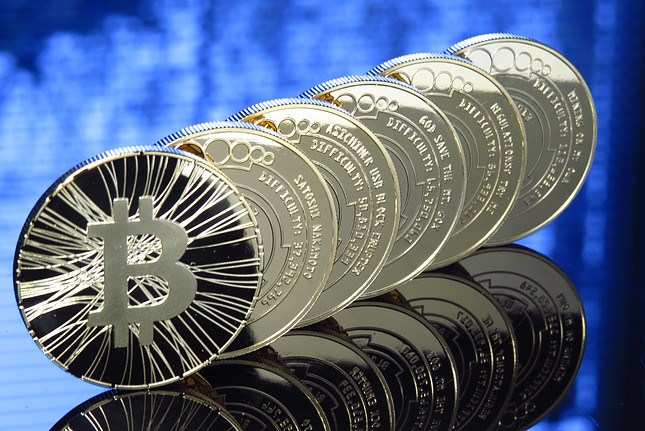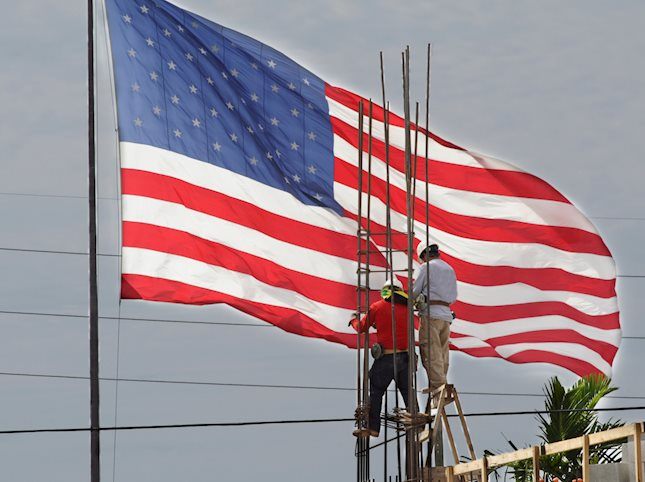- Mexican Peso strengthens for second consecutive day as USD/MXN drops close to 1%.
- Positive market reaction comes in response to choice of Marcelo Ebrard as economy minister.
- Banxico expected to hold rates unchanged amid inflation concerns and recent Peso depreciation.
The Mexican Peso rallied for the second straight day against the US Dollar on Friday after President-elect Claudia Sheinbaum revealed the first members of the cabinet on Thursday, which were cheered by investors. In the meantime, traders brace for next week’s Bank of Mexico (Banxico) monetary policy decision, which is expected to hold rates unchanged. The USD/MXN trades at 18.21, down 0.80%.
Mexico’s President-elect Sheinbaum revealed on Thursday the first six cabinet members to take office on October 1. She named Marcelo Ebrard as economy minister and Juan Ramon de la Fuente as foreign minister. Traders saw these appointments as positive since Ebrard will oversee the USMCA free trade agreement review.
Data-wise, the Mexican economic docket featured Economic Activity, which plunged in April, as shown by monthly figures. In the twelve months to April, it exceeded estimates.
In the meantime, most analysts estimate Banxico will keep rates unchanged after the 6.95% depreciation of the Mexican Peso following the June 2 general election. The consensus was expecting a 25-basis-point cut on June 27, though not unanimously, as Deputy Governors Jonathan Heath and Irene Espinosa expressed that inflation risks were skewed to the upside.
Across the border, June S&P Global Flash PMIs exceeded estimates, a sign of economic robustness. Nevertheless, the latest Existing Home Sales data suggests the housing market continues to cool down.
Daily digest market movers: Mexican Peso advances after mixed economic activity data
- Mexico’s April Economic Activity plunged -0.6% MoM, deeper than the expected -0.3% contraction. On an annual basis, Economic Activity expanded by 5.4%, up from -1.3%, and exceeded the consensus of 3.8%.
- Citibanamex Survey showed that most analysts estimate Banxico’s next rate cut will come at the August 8 meeting and that interest rates will be lowered from 11.00% to 10.25%, up from 10%.
- According to the poll, economists estimate inflation to finish 2024 down at 4.27%, core inflation at 4.02%, and the USD/MXN exchange rate at 18.70.
- USD/MXN stabilizes following last week’s verbal intervention by Banxico Governor Victoria Rodriguez Ceja, who said the central bank is attentive to volatility in the Mexican currency exchange rate and could act to restore “order” in markets.
- S&P Global Manufacturing and Services Flash PMIs in June expanded above estimates. Manufacturing PMI came at 51.7, up from 51.3 and the estimate of 51. The Services PMI jumped from 54.8 to 55.1 and was above forecasts of 53.7.
- US Existing Home Sales in May were lower than expected at 4.11 million from 4.14 million in April, a contraction of -0.7%.
- CME FedWatch Tool shows odds for a 25-basis-point Fed rate cut at 59.5%, up from 57.5% on Thursday.
Technical analysis: Mexican Peso climbs as USD/MXN falls below 18.30
The USD/MXN is upwardly biased as a Golden Cross emerged two days ago, but today’s dip below 18.30 has opened the door for a pullback with bears eyeing the 18.00 psychological level. At the time of writing, momentum favors sellers as the Relative Strength Index (RSI) almost vertically falls toward the 50-neutral line.
That said, the USD/MXN first support would be the 18.00 figure. Once cleared, the next stop would be the 50-day Simple Moving Average (SMA) at 17.29, ahead of the 200-day SMA at 17.23.
For a bullish continuation, the USD/MXN must clear 18.50 if buyers want to retest the year-to-date high of 18.99. A breach of the latter will expose the March 20, 2023, high of 19.23. If that price is cleared, this will sponsor an uptick to 19.50.
Mexican Peso FAQs
The Mexican Peso (MXN) is the most traded currency among its Latin American peers. Its value is broadly determined by the performance of the Mexican economy, the country’s central bank’s policy, the amount of foreign investment in the country and even the levels of remittances sent by Mexicans who live abroad, particularly in the United States. Geopolitical trends can also move MXN: for example, the process of nearshoring – or the decision by some firms to relocate manufacturing capacity and supply chains closer to their home countries – is also seen as a catalyst for the Mexican currency as the country is considered a key manufacturing hub in the American continent. Another catalyst for MXN is Oil prices as Mexico is a key exporter of the commodity.
The main objective of Mexico’s central bank, also known as Banxico, is to maintain inflation at low and stable levels (at or close to its target of 3%, the midpoint in a tolerance band of between 2% and 4%). To this end, the bank sets an appropriate level of interest rates. When inflation is too high, Banxico will attempt to tame it by raising interest rates, making it more expensive for households and businesses to borrow money, thus cooling demand and the overall economy. Higher interest rates are generally positive for the Mexican Peso (MXN) as they lead to higher yields, making the country a more attractive place for investors. On the contrary, lower interest rates tend to weaken MXN.
Macroeconomic data releases are key to assess the state of the economy and can have an impact on the Mexican Peso (MXN) valuation. A strong Mexican economy, based on high economic growth, low unemployment and high confidence is good for MXN. Not only does it attract more foreign investment but it may encourage the Bank of Mexico (Banxico) to increase interest rates, particularly if this strength comes together with elevated inflation. However, if economic data is weak, MXN is likely to depreciate.
As an emerging-market currency, the Mexican Peso (MXN) tends to strive during risk-on periods, or when investors perceive that broader market risks are low and thus are eager to engage with investments that carry a higher risk. Conversely, MXN tends to weaken at times of market turbulence or economic uncertainty as investors tend to sell higher-risk assets and flee to the more-stable safe havens.
Information on these pages contains forward-looking statements that involve risks and uncertainties. Markets and instruments profiled on this page are for informational purposes only and should not in any way come across as a recommendation to buy or sell in these assets. You should do your own thorough research before making any investment decisions. FXStreet does not in any way guarantee that this information is free from mistakes, errors, or material misstatements. It also does not guarantee that this information is of a timely nature. Investing in Open Markets involves a great deal of risk, including the loss of all or a portion of your investment, as well as emotional distress. All risks, losses and costs associated with investing, including total loss of principal, are your responsibility. The views and opinions expressed in this article are those of the authors and do not necessarily reflect the official policy or position of FXStreet nor its advertisers. The author will not be held responsible for information that is found at the end of links posted on this page.
If not otherwise explicitly mentioned in the body of the article, at the time of writing, the author has no position in any stock mentioned in this article and no business relationship with any company mentioned. The author has not received compensation for writing this article, other than from FXStreet.
FXStreet and the author do not provide personalized recommendations. The author makes no representations as to the accuracy, completeness, or suitability of this information. FXStreet and the author will not be liable for any errors, omissions or any losses, injuries or damages arising from this information and its display or use. Errors and omissions excepted.
The author and FXStreet are not registered investment advisors and nothing in this article is intended to be investment advice.
Recommended content
Editors’ Picks

EUR/USD holds around 1.0300, with USD still dominating the scene
EUR/USD trades within familiar levels at around the 1.0300 mark, although the US Dollar pushes marginally higher in a quiet, holiday-inspired American session. Focus shifts to US Nonfarm Payrolls on Friday.

GBP/USD rebounds from multi-month lows, trades around 1.2300
GBP/USD trimmed part of its early losses and trades around 1.2300 after setting a 14-month-low below 1.2250. The pair recovers as the UK gilt yields correct lower after surging to multi-year highs on a two-day gilt selloff. Markets keep an eye on comments from central bank officials.

Gold hovers around $2.670, aims higher
Gold extended its weekly recovery and traded at its highest level since mid-December, above $2,670. The bright metal retreated modestly in a quiet American session, with US markets closed amid a National Day of Mourning.

Bitcoin falls below $94,000 as over $568 million outflows from ETFs
Bitcoin continues to edge down, trading below the $94,000 level on Thursday after falling more than 5% this week. Bitcoin US spot Exchange Traded Funds recorded an outflow of over $568 million on Wednesday, showing signs of decreasing demand.

How to trade NFP, one of the most volatile events Premium
NFP is the acronym for Nonfarm Payrolls, arguably the most important economic data release in the world. The indicator, which provides a comprehensive snapshot of the health of the US labor market, is typically published on the first Friday of each month.

Best Forex Brokers with Low Spreads
VERIFIED Low spreads are crucial for reducing trading costs. Explore top Forex brokers offering competitive spreads and high leverage. Compare options for EUR/USD, GBP/USD, USD/JPY, and Gold.
